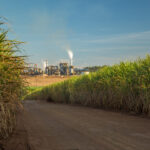No products in the cart.
Agri Inputs And Climate Resilience – Farming Smarter in 2025
Climate Resilience is the Future of Agriculture
Farming in 2025 is more challenging than ever due to climate change, unpredictable weather patterns, and resource scarcity. Farmers worldwide are adopting smarter, more sustainable agri inputs to ensure higher productivity while reducing environmental risks. The shift to climate-resilient agriculture is no longer optional—it is essential for food security and economic stability.
Extreme temperatures, droughts, flooding, and soil degradation threaten agricultural production, but new agri inputs are providing solutions. Smart irrigation systems, biofertilizers, climate-resilient seeds, and AI-driven soil health monitoring are equipping farmers with the tools needed to adapt to climate variability while maintaining high yields.
This blog explores how agri inputs and climate resilience are shaping the future of farming in 2025, backed by global insights, research, and real-world success stories.
1. Climate-Resilient Seeds – Protecting Crops from Extreme Weather
Climate change has made traditional crops vulnerable to unpredictable rainfall, droughts, and floods. Climate-resilient seeds are engineered to withstand these challenges, ensuring stable yields and food security.
Global Trends and Growth
- The climate-resilient seed market is projected to grow at 18 percent annually, helping reduce crop loss by 40 percent.
- Governments and agribusinesses in over 50 countries are investing in drought-tolerant and flood-resistant crop varieties.
Case Study – Drought-Resistant Corn in Africa
African farmers growing drought-resistant corn have reported stable yields even in water-scarce conditions.
- Corn production increased by 30 percent, ensuring food stability despite prolonged dry spells.
Real-World Example – Flood-Resistant Rice in Bangladesh
Bangladeshi farmers are planting submergence-tolerant rice, designed to survive and continue growing after flooding events.
- Yields improved by 25 percent, ensuring better income and food supply for coastal farmers.
Why It’s a Game-Changer
Climate-resilient seeds protect farmers from extreme weather events, ensuring food security even under unpredictable climate conditions.
2. Biofertilizers – Enhancing Soil Resilience Naturally
Synthetic fertilizers have accelerated soil degradation, making farming more difficult over time. Biofertilizers improve soil fertility using natural microorganisms, boosting nutrient absorption, enhancing microbial diversity, and reducing reliance on chemical inputs.
Global Trends and Growth
- The biofertilizer market is expected to reach $20 billion by 2030, growing at a CAGR of 12 percent.
- Farms transitioning to biofertilizers have seen soil organic matter increase by 30 percent, making land more resilient to climate stress.
Case Study – Microbial Biofertilizers in Brazil
Brazilian soybean farmers replaced synthetic fertilizers with microbial biofertilizers, enriching soil with nitrogen-fixing bacteria.
- Crop yields increased by 25 percent, while fertilizer costs dropped by 20 percent.
Real-World Example – Mycorrhizal Fungi in Germany
European wheat farms using mycorrhizal fungi biofertilizers saw enhanced phosphorus uptake and drought resistance.
- Soil phosphorus levels improved by 40 percent, reducing dependency on chemical phosphorus fertilizers.
Why It’s a Game-Changer
Biofertilizers restore soil health, making crops more resilient to extreme weather conditions and reducing chemical dependency.
3. AI-Powered Soil Health Monitoring – Smarter Land Management
Soil degradation is one of the biggest agricultural threats, making AI-driven soil health monitoring a critical tool for sustainable farming. These technologies provide real-time data on nutrient levels, soil moisture, and microbial activity, allowing farmers to make precise adjustments.
Global Trends and Growth
- AI-driven soil monitoring has increased farm efficiency by 35 percent worldwide.
- Farms using IoT soil sensors have reduced fertilizer waste by 40 percent while maintaining high productivity.
Case Study – Smart Soil Mapping in the U.S.
A U.S. wheat farm implemented AI-driven soil sensors to optimize fertilization schedules and nutrient management.
- Fertilizer use was reduced by 20 percent, while wheat yields increased by 15 percent.
Real-World Example – IoT Soil Analytics in India
Indian farmers use satellite-linked soil sensors to assess soil health and optimize planting decisions.
- Crop mismatches decreased by 30 percent, leading to higher long-term productivity.
Why It’s a Game-Changer
AI-powered soil analytics allow precision farming, reducing costs while maximizing crop growth and resilience.
4. Smart Irrigation – Water-Saving Solutions for Climate-Smart Farming
Water scarcity is one of the most pressing global challenges, making smart irrigation essential for climate-resilient agriculture. These systems optimize water delivery based on real-time weather and soil data, reducing waste and ensuring crops receive the exact amount of water needed.
Global Trends and Growth
- Smart irrigation systems have reduced global agricultural water usage by 30 percent, conserving vital freshwater resources.
- Farms implementing AI-driven water models have improved yields by 25 percent while cutting water usage by 50 percent.
Case Study – Drip Irrigation in Israel
Israeli farmers introduced AI-powered drip irrigation, delivering water directly to plant roots, reducing evaporation and runoff.
- Water usage dropped by 60 percent, while crop productivity increased by 20 percent.
Real-World Example – AI-Based Irrigation in India
Indian farmers are adopting AI-driven water management models, improving efficiency in drought-prone areas.
- Five million farmers now have stable water supplies, ensuring consistent food production.
Why It’s a Game-Changer
Smart irrigation minimizes water waste while maximizing efficiency, ensuring food security in an era of climate uncertainty.
Conclusion – Smart Agri Inputs are Essential for Climate Resilience
Farming in 2025 requires innovation and adaptation. The shift toward climate-smart agri inputs, including AI-driven soil monitoring, biofertilizers, climate-resilient seeds, and precision irrigation, is reshaping agriculture into a more efficient, sustainable, and climate-resilient industry.
Farmers who embrace these technologies will thrive, ensuring higher productivity, lower input costs, and improved resilience against climate change. The future of farming is not about using more resources but using them smarter. The real question is: Will your farm be part of the transformation, or will it struggle to keep up?
Join the Climate-Resilient Farming Revolution with Invade Agro
Sustainable agriculture starts with smart agri inputs. Invade Agro provides:
- Biofertilizers for Soil Health
- AI-Powered Precision Farming
- Climate-Resilient Seeds & Smart Irrigation Systems
Take action today. Contact us now to integrate climate-smart agri inputs into your farming practices and secure the future of food production. The world is changing—make sure your farm is ready.



